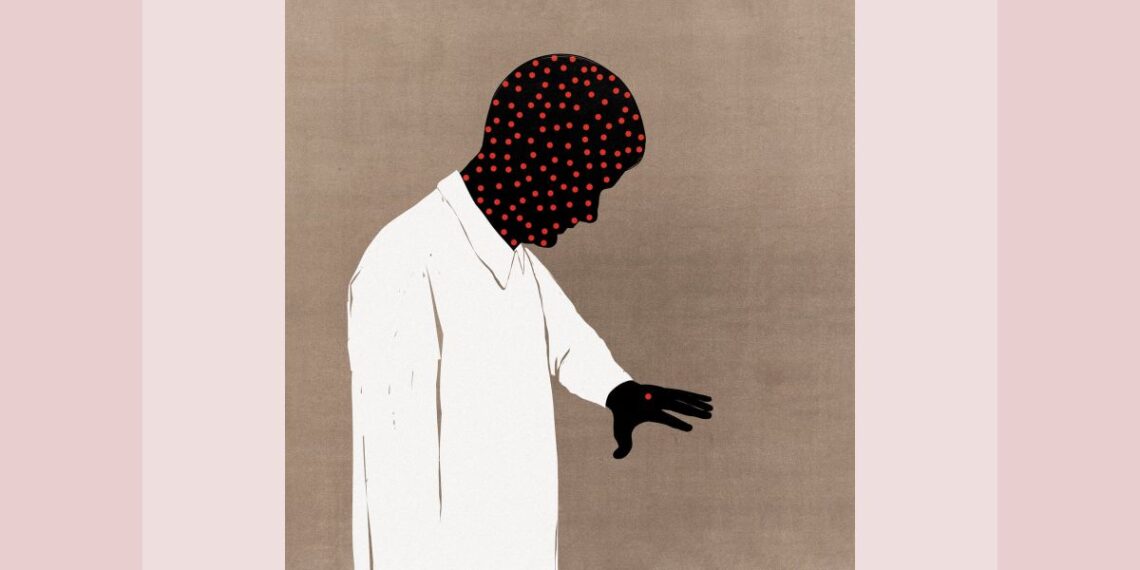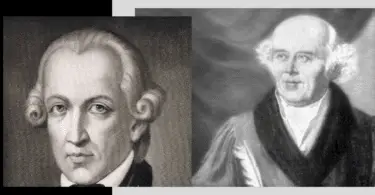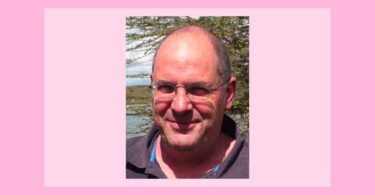CONTENTS:
Previous article in this series
I. Introduction.
II. A condensed view of SCHOLTEN’s theory.
III. Two cases – Refined Case Analysis based on two Levels of Repertorisation (KENT and SCHOLTEN)
Essences in cancer cases:
IV. Finding out the essence in cancer cases (Two Cases)
V. Theoretical aspectsa. Syndrome shifts
This issue focuses on the
b. Miasmas – in comparison to constitution and life-conflicts
—————————————————
IV.
Miasma
In Comparison to Constitution and Life-Conflicts
MIASMA THEORIES
The large field of the Materia Medica showed many different remedies, different in character. However, Hahnemann was most impressed by particular diseases, which required particular attention.
The destructive elements of syphilis became apparent. At this time, during the Napoleon wars, syphilis spread quickly over Europe and could be studied very well. The character of syphilis was an object of investigation, indicating a definite miasma.
Mercury could achieve results in these cases and syphilis was first associated with Mercury as a main remedy. Sycosis, different in character, was associated with Thuja and we have here an important remedy for this kind of illness. Psora is the third Miasma, the root and the reservoir of all diseases and all evil that has touched mankind. The theory of the miasmas was written.
Indeed, we must not forget that the origin of all disease is an aberration of the life-force (Verstimmung der Lebenskraft)! This has to be considered as the root of all diseases, a fact that is more important than the miasma theory. The miasmas are multiple in appearance and therefore of inferior significance in diagnosing a disease-process.
Later remedies have been systematically associated with these three miasmas. J.H. Allen wrote a lot about remedies associated with different miasmas. Finally pseudo-psora, the tubercular trait, was added to these three big miasmas. A fourth miasma was detected and it was said that if syphilis is apparent in a person for a long time or over generations, it may be mixed up with psora: and pseudo-psora establishes. Reading the works of Allen, Roberts and Speight we realize that they insist on the miasma theory in order to be able to draft a strategy to cure severe cases! – Do we really have to know? The patient with Hodgkin’s disease was cured with a single remedy, Ferrum iodatum – without the miasma theory. Other similarly complex cases I have published were also cured without the miasma theory.
Prescribing a single remedy for a particular patient may cure cancer as well. The Periodic Table (PT) is an example of how we look for remedies before paying attention to a particular miasma. By this way we observe that the miasmas are included in each element of the PT. If we deal with a life-theme of the patient, we already have found a constitutional remedy. Indeed, the elaboration of the PT seems to give insight in superior orders, including the “miasmas” (see below, “Other Concepts”).
CONCEPTS of MIASMA THEORIES
Above all, the theory says that there is a foreign force affecting the organism and producing disease. Thus a remedy has to be administered to eliminate this disturbance and to recuperate the patient’s health.
Sanchez Ortega said that a cell has only three possibilities to exist in a pathological manner: psora is connected with weakness, sycosis is connected with hypertrophy, and syphilis is connected with perversion as well as destruction. These kinds of diseases are of course expressed physically as well as in character and psyche of particular individuals. And they are always expressed symbolically which makes them easily detectable.
Syphilis, sycosis and psora are of course not necessarily connected with the germs. It is the character of syphilis, sycosis and psora, it is their symptomatology and trait that points to a particular miasma.
Elizalde Masi teaches a more philosophical aspect of the miasmas; when man is born, he starts with psora. He has great fears when he is born into this world and at the same time loses contact to the universe, to the only entirety, the continuum (Bohm). As not only philosophers but also quantum physicists describe the only one; man has lost the abilities and attributes of God, the almighty God, the omnipresent God. The paradise is lost, fear arises; this fear is unbearable and is thus projected onto objects; for example, a dog, darkness, fear of disease and so on. In a desperate attempt to escape the unbearable combination of fear and weakness, man is driven into hypertrophy. Such thinking brings about severe consequences. If two persons are interested in the same subject, a collision may arise. As a result one’s personal point of view, one’s limited “ego”, the very personal will and attitude have to be destroyed – it is obvious that perversion and destruction set in if not corrected.
In a way, disease is a message, sometimes even painful, which requires a higher social consciousness for the individual as well as for the collective.
Masi says therefore that each remedy may exist in a psoric, in a sycotic and in a luetic stage, in fear and weakness, in hypertrophy and in destruction.
Originally Hahnemann himself drafted the first coordinates through the vastness of the symptomatology of diseases and tried to associate particular remedies, Mercury, Thuja and Sulphur with the three miasmas.
These miasmas constitute a system, coordinates, enabling us to sail in the vast ocean of diseases, in which remedies are closely bonded to each of these miasmas. It is not the germ of syphilis or gonorrhoea, it is far more the character of these diseases that is associated with these miasmas.
Why three Miasmas? – It may be of interest that H.P. Dürr, a particle physicist from the Max Planck Institute in Germany, says that we do not know why we are living in a 3-dimensional space, why not in 4- or 5-dimensions. To describe a location, we need three dimensions, motion is associated to the 4th dimension: time. It is remarkable that time has a lot do to with the tubercular element, quickness, desire to travel, etc. In order to understanding this attitude we need a holistic view.
There is another point of view!
The point of view of Rudolf Flury, who lived from 1903 to 1977 in Bern, is another very interesting aspect of diseases and even of the miasmas. Flury greatly stressed the aspect of the constitution. The constitution consists of life-long signs and symptoms, features of the patient’s character and body may be more important than local symptoms (we treat the patient not just symptoms). Flury further states that on the basis of one’s constitution an illness may break out or may not break out. To go back to the roots he took the four Classical Aristotelian Temperaments to describe four basic characters of a person, to which he associated corresponding remedies. The elements of fire, water, earth and air were associated with the following characters: choleric, phlegmatic, melancholic and sanguine.
The fourth element, pseudo-psora or tuberculosis was later integrated into homeopathy. Flury, a priori, integrated it into his four types of persons, depending on the character of a Tuberculine person – here of course we are dealing with the sanguine type.1
Hahnemann said that the tuberculine element, or pseudo-psora, comes about when syphilis and psora are combined for a long time, creating the tuberculine taint.
Flury has made a big step. He associated miasmas (outside) with the constitution (inside). Symbolically spoken, an offender may invade a particular fortress, or may fail to do so. In order to save the patient, we may prefer the aspect of the constitution rather than to chase miasmas. Stressing the constitution may be a more efficient way in treating a patient instead of focusing on the power of the invader. By concentrating on the “constitution”, we attain a much more positive attitude.
Flury considered the constitution of a patient as lifelong signs and symptoms, features that characterizes a patient over a very long time.
David Bohm says: “Original and creative insight within the whole field of measure is the action of the immeasurable. For, when such insight occurs, the source cannot be within the ideals already contained in the field of measure, but rather has to be in the immeasurable, which contains the essential formative cause of all that happens in the field of measure”.
According to Bohm, we can consider the universe as a single entity, which cannot be divided. One element depends on the other.
We have to face the continuum – out of which all other elements arise. Therefore an objective point of view, at least, the most objective standpoint we can attain has to be asserted, in order to see the essence and to be able to decide and to act. To divide a system (the only one) in only three, or four pieces obliges us to operate on a high hierarchic level.
If we divide the continuum into four elements, we can see that the qualities of earth, water, air and fire are very different in their nature. Flury’s description of the character of these four categories is very distinctive. The elements are projected into each human being and are absorbed and reflected by the very individual character of a person.
The miasmas exist in the very moment we leave the continuum (see Elizalde Masi). In this very moment we confront a dissected life-force. When the continuum is split up, we observe parts – here, three, four or more miasmas.
It is however true that we need coordinates to be able to find our own position and to find the position of the remedy within this great multiplicity.
Chinese philosophy considers five elements to describe reality. In mathematical terms we even can display five or even more miasmas as Sankaran does. But this is a question of one’s “point of view”.
Whereas Scholten is very clear and systematic, Sankaran enlarges this system. Similar to the way in which the tuberculine miasma was added, further miasmas are described by Sankaran who speaks about the miasma of malaria and cancer and others. This is a different nomenclature, which also has validity.
OTHER CONCEPTS
The Miasmas are included in the Order of the Periodic Table
Let us go back to the Periodic Table. Scholten mentions that here we can see the manifestation of the “miasmas”. They are integrated and represented by each individual chemical element. Moving through the stages from the left side to the right side we observe the stages of development, climax and decline of a given theme: in the first stages there is insecurity and one has to go step by step to overcome this kind of weakness; in the center of the series we find hypertrophy, everything is formed and blooming; and finally we descend towards decay and destruction and the theme has to come to an end. So here we find weakness, hypertrophy and destruction in a continuous sequence.
(Here, I refer to Ortega with regard to the defined territory of a remedy, and later I also refer to Masi with regard to the sequence of events concerning “time”).
In a similar pattern, the miasmas are represented from top to bottom: creation of the ego – contact to others – work as task – creation of individuality – then to rule over people and to loose oneself in the other – loss of the personal ego. Psora, sycosis, syphilis – not only in a pathological way, but also as a way of development. The development of the individual person progresses if we elaborate the Lanthanides. They represent persons who are intuitive, extremely sensitive to ideas (Silver series) and at the same time responsible and active (Aurum series). They have to accomplish a certain task with success.
In the left upper corner of the periodic table, we find the strongest psoric disposition (underdeveloped), whereas the strongest syphilitic condition (destructiveness) is represented on the right lower side.
The periodic table is a Materia Medica as well as a Repertory. We have a hierarchic order, preformed by nature. Moreover, when looking at it we have another point of view regarding the Miasmas. This view includes the three stages of Sanchez Ortega: weakness, hypertrophy, followed by decay and destruction.
At the same time each element can be seen according to Masi: each single element exists in a psoric, sycotic, or luetic stage (see diagram below, mercury as an example).
This is another aspect of the miasmas! Does it contradict the aspects of Hahnemann, Ortega and Masi? Not necessarily! It is just a different perspective in perceiving the activity of the miasmas. However, just by looking at it we can detect the miasmatic character at a glance.
One can say that Mercury belongs to a series containing destructive elements, the Aurum series; its position is on the stages of decay (stage 12), therefore it is mostly syphilitic. This would correspond with Ortega’s concept and does not contradict Hahnemann’s first description of the luetic miasma.
One can say that a person, or a situation can be associated with Mercury – just as it was the case with Germany. Regarding the period in-between the two World Wars, Germany can be considered to have been in a psoric state, with all its weakness and hopelessness (hostility within the country). When Hitler attacked Poland the nation was in a sycotic Mercury state, and finally when the Russians conquered Berlin it was in a luetic Mercury state (compare Masi).
What’s really important here is that this is a Mercury state: Division and hostility! Separation and decay! What is most important here is the THEME! This theme can be observed for a certain period.
Mercury as a luetic element belongs to the Aurum series. Located at stage 12, we have entered a territory of decay and destruction, which stresses the decline of the theme.
Furthermore, the element itself may exist in three different miasmatic stages (psoric, syphilitic, luetic.)
Stage 13 of the Aurum-Series represents the theme of Thallium, and can be associated with former East Germany. People began spying on and betraying each other. The destructive powers proceed, the violence cannot be seen so easily any more. We no longer see how people offend each other – the hostility is hidden. This is a stage 13, Thallium, a substance out of which rat poison is made. Jan Scholten himself has illustrated these features very carefully.
It is the theme. The theme is the essence! But the theme of the element itself may be differentiated into three miasmatic phases (Masi) as mentioned above.
Conclusion
I tried to give some insight into the development of miasma theories, starting from three, going to four, up to ten miasmas and made transparent the relation to the constitution. Stressing the constitution, we pay attention to the character of the patient in mind and body. Each constitution is sensitive to different kinds of miasmas. Therefore there is a strong affinity between constitution and miasmas.
From experience we know that a person requiring Lycopodium has a lot of characteristics, which are not necessarily symptoms, but features and properties. We are treating the patient, his signs and symptoms and not only symptoms. By just considering the symptoms of the patient/disease we dissect the diseased area from the patient. This may lead to suppression, creating new symptoms. According to the theory of the continuum (Bohm), and according to experience, we should try not to separate the signs and features of a patient from his/her symptoms. Disease is an aberration of the healthy functions of the body and mind, and not a part of its own. No dissociations should be made (Flury).
We spoke of space and time and other dimensions homeopathy deals with. Sankaran extends our point of view and offers a very refined differential diagnosis, enabling us to see fine nuances just as if we would use a microscope.
The other way round is to condense space and time, and here I will refer to Werner Heisenberg who annotated that if we go to sub-atomic levels (what homeopathy definitely does) the dissociation between space and time is inexistent – only with the manifestation of the atom, the space-time separation becomes evident.
Potentizing an appropriate remedy, we now go back and condense space and time, whereas in the investigation of a case we extend space and time. This explains many of the immediate results of homeopathic remedies:
A lady consulted me because of sciatica. She has started a career as a dancing teacher for seniors; she is a little bit shy and insecure to open herself to the audience. She came with severe pain, worse on the right side, better when she has warm applications.
The symptoms, modalities and conflicts (shy to the audience, desire for company, openness), indicate Magnesium phosphoricum. She had big troubles to come up the stairs, but after taking the remedy, she was able to bind her shoe-laces by standing on one leg. Whereas her troubles have developed over a long period (video case), she was free of symptoms within 5 minutes after taking the remedy.
A lady operated on a brain tumor was vomiting since two days following surgery. Taking two globules of Arnica XM, she immediately felt very heated, fell asleep for half an hour and was then fine and had an appetite, so much so as to eat an entire slice of bread.
Annotations:
1) Gerhard Resch, Vienna, edited these elaborations of Flury. Flury presents very distinctive descriptions of these four qualities, of these four characters of mind and body. See Repertorium Dr. FLURY ©. 1979 M. Flury-Lemberg, Bern;
References:
Allen J. H.: Die chronischen Krankheiten РDie Miasmen; Rvs-Verlag, Ren̩ von Schlick (Aachen 1987, Bd. 2 1989);
Boericke W.: Homoeopathische Mittel und ihre Wirkungen. 3. Aufl.; Grundlagen und Praxis (Leer 1986);
BOHM D.: 2004; Wholeness and the Implicate Order; Reprint; Routledge Classics; Taylor & Francis Group, London – UK;
De Beaukelaer E.: Enriching Your Homeopathy; Homeopathy for Everyone – Hpathy Ezine; April’07 (online 2007); https://hpathy.com/homeopathy-papers/;
Dürr H.P. Auch die Wissenschaft spricht nur in Gleichnissen; Herder (Freiburg/Wien/Berlin 2004);
Hering C.: On the Study of Homeopathic Materia Medica; Homeopathy for Everyone – Hpathy Ezine; April’07 (online 2007); https://hpathy.com/homeopathy-papers/;
Flury R.: Realitätserkenntnis und Homoeopathie (mit Karten-Repertorium), RESCH G.& FLURY-LEMBERG M. (Bern 1979);
Hahnemann S.: Organon der Heilkunst, 5., verb. u. vermehrte Aufl.; Haug (Heidelberg 1987);
Kamthan PS: Cancer ? Curable under homoeopathic treatment. New Delhi: B. Jain; 2004: 3?4.
Kent JT: Repertory of the Homeopathic Materia Medica and a Word Index, Homeopathic Book Service (London 1986);
Payrhuber D.: Dimensions Of homeopathic Medizin; Published by the Author (Salzburg 1998);
Payrhuber D.: Summary of cancer treatment: cure or amelioration of cancer by using mineral remedies; Abstract of the 60th Congress of the Liga Medicorum, AHZ 05/250 (Stuttgart 2005);
;
Payrhuber D.: Krebs und Homoeopathie; Eigenverlag (Salzburg 2006);
Interhomeopathy Vol. 09/06; (online 2006); http://www.interhomeopathy.org/index.php/journal/cat/C19/;
Payrhuber D.: Krebs und Homoeopathie, AHZ 01/06, 251: 27-34 (Stuttgart 2006);
;
Payrhuber D.: Cancer and Homeopathy; English Version to be published soon (probably 2008); subscription possible;
Resch G. Gutmann V.: Wissenschaftliche Grundlagen der Homoeopathie, 3ed ed., Barthel & Barthel Verlag (Schäftlarn 1994);
Scholten J.: Homeopathy and the Elements; Stichting Alonissos (Utrecht 1993);
Scholten JC: Homeopathy and Minerals. Utrecht: Stichting Alonnissos; 1993.
Schroyens F: Synthesis ? Repertorium Homeopathicum Syntheticum 6th ed. London: Homeopathic Book Service; 1993.
————————————————–
About the author:
Dr. Dietmar Payrhuber
Eduard Baumgarthner Str. 8
A-5020 Salzburg
e-mail: [email protected]
URL: www.payrhuber.at





